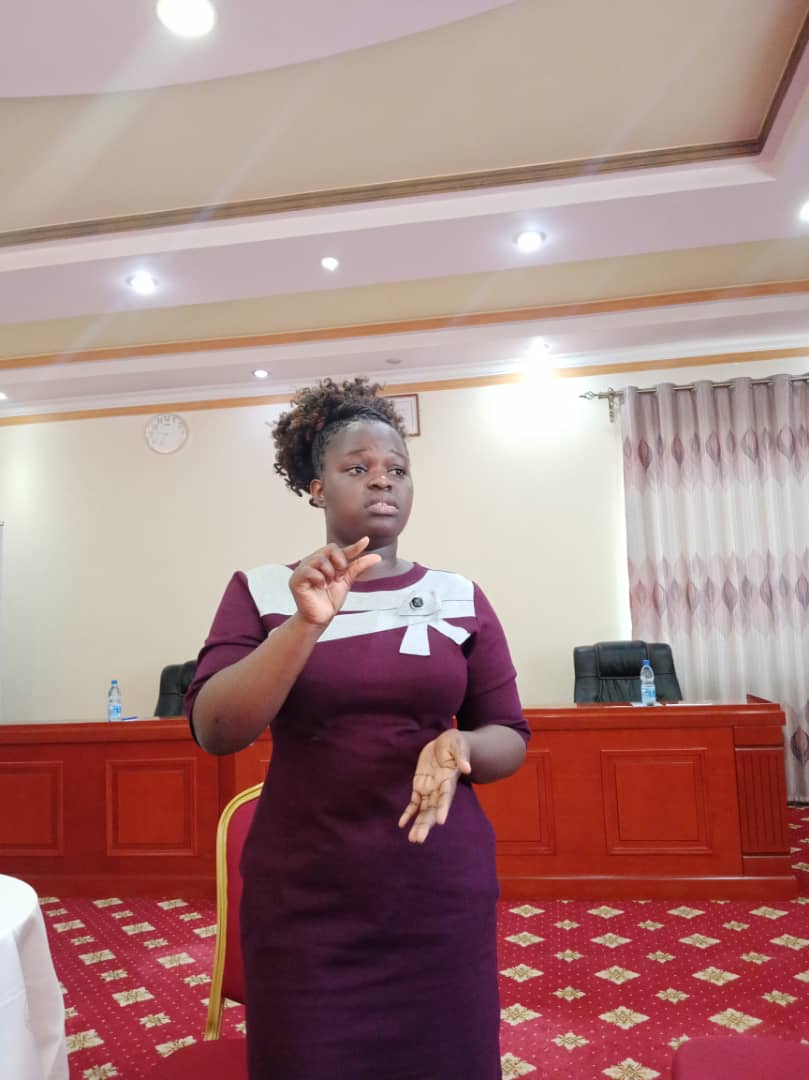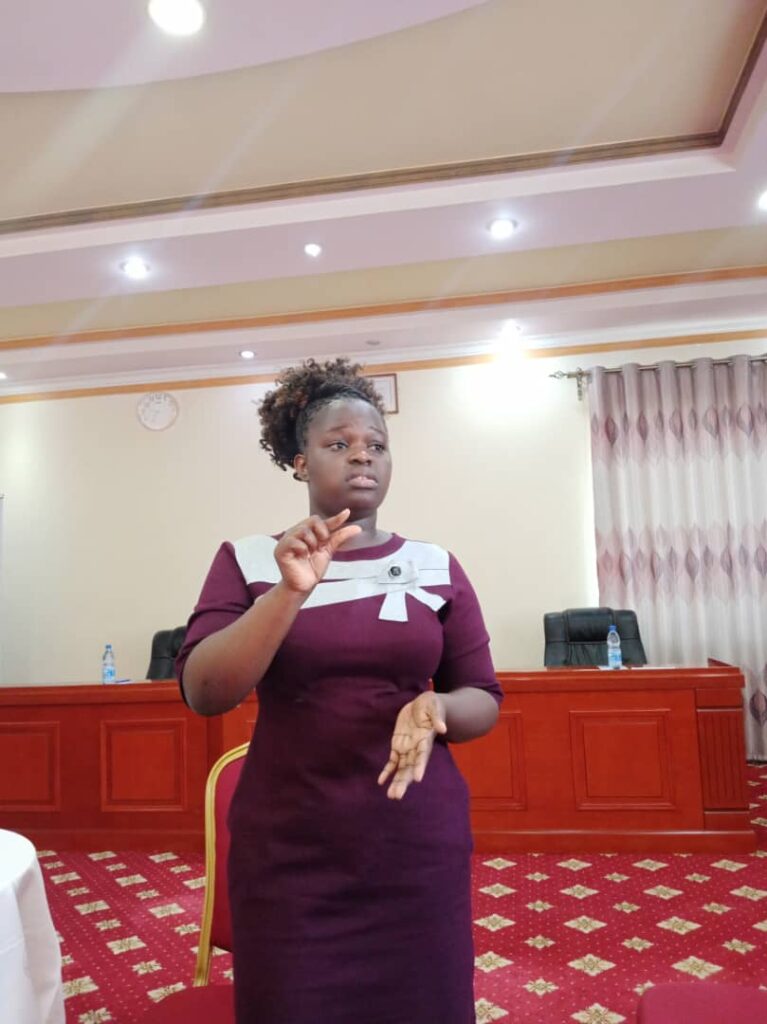
 Mama FM
Mama FM

 Mama FM
Mama FM
15 September 2023, 8:59 am
Byamukama Alozious
Youths in Uganda are making a public outcry to policy makers to include them in accessing sexual reproductive health to which they compliant the service has many gaps that limit them from enjoying this right.
The 1995 constitution of Uganda chapter 4 espouses the freedom of rights, Youths it hard to realize the basic human rights as it is in getting sexual reproductive services. There is negative bias attached to young women and adolescents living with HIV, sex workers, young women and teenagers.
Aisha Namugga from Tunaweza Foundation an organization which is advocating the rights of young Persons living with disabilities says, PWDS youths find difficulties such as negative attitude from the health workers who tend to ignore them , Lack of privacy due to a disability one may have, physical inaccessibility especially to facilities which are in stored buildings , negligence from parents, high prices of essential needs such as pads, long distances among others remain a big hindrances to youths living with disabilities

She says most facilities outside cities are far away from the PWDS hence some cannot move whereas others blind, this makes the movement had and expensive for them
“we would like some services be free like menstrual pads, ARVS , Condemns, adjustable labor beds and also health workers be trained in handling young PWDS” She said
Rinah Marion, a student at Makerere University living with hearing disability says life is not easy for her whenever she needs SRHR Service due to the disability she has, ‘’there no professional interpreters who can understand me and due to this there is always a miscommunication’’. She adds that the University Hospital is away outside the University presumes yet other colleagues who live with disabilities cannot cross Kampala busy roads due to lack of helpers and decide to remain in Hostels without any services, training or Information. This makes some of the young people be ignorant about sexual reproductive health right
“I have my colleague is who deaf whenever we talk about sexual matters she runs away” Marion adds
According to Uganda Bureau of Statistics UBOS, one of the driver for SRHR hindrance factor is Poverty. UBOS states that 65% of youth between 20 and 24 are unemployed and 21.1% are living below poverty line, this limits economic access to SRH services
Bridget Amutwongire, from Uganda cares adds that, young women suffer more as there are poor menstrual health, poor attitude from the attendants, lack of home support.

Young people are now calling for inclusivity of PWDS in programming and uptake of SRHR services, need for dispensers for sanitary towels in health facilities and work places, call for professional language interpreters and need for comprehensive antenatal packages at ART health facilities
Context of Sexual reproductive health right in Uganda
Sexual and reproductive health and rights (SRHR) are crucial entitlements relating to women and girls’ sexual and reproductive health. These rights address the prevention of sexually transmitted diseases, including HIV, gender-based violence, maternal mortality and provision of essential health services.
Since the International Conference on Population and Development (1994) and the Beijing Platform for Action (1995), national SRHR policies have been demonstrated to support societies and contribute to a country’s wealth. The importance of SRHR is further underscored by section 5.6 of Sustainable Development Goal 5 dedicated to achieving SRHR for all.
Uganda has a population of 45.75 million people with a growth rate of 3.2% per year. 75% of this population is under the age of 30 (UNFPA). The total fertility rate averages 5.4 children for every woman of childbearing age and the average age of sexual debut in Uganda is 16 (UDHS). The maternal mortality rate is at 336 for every 100,000 live births, 28% of which occur among girls between the ages of 15 to 24 years and unsafe abortion contributes 9% to the maternal mortality rate (UDHS). The unmet family planning need is at 32% with rural areas suffering the highest disparities, adolescent pregnancy rate stands at 25% among girls aged 15 to 19 years with 12% of adolescent girls married off this contributes to 23% of school dropouts, more so during the Covid-19 period 644.955 teenage pregnancies were recorded (UBOS).
HIV prevalence stands at 6.2% amongst the entire population with young women aged 15 to 24 years bearing the biggest burden since their infection rates are 4 times higher than the rest of the population (UDHS).
Gender based violence remains endemic with 56% of the female population reporting having experienced intimate partner violence and 22% reporting having experienced sexual violence of some sort (UNFPA).
The biggest drivers for Uganda’s SRHR indicators include poverty with reports showing that 65% of youth between 20 to 24 being unemployed and 21.4% of Ugandans living below the poverty line (UBOS), which limits economic access to SRH services disproportionately affected by this are sexual minorities, women and girls who have even greater barriers to economic resources which affects their autonomy and agency. Contributing to this are systemic issues within our health care system like: lack of skilled staff, limited access to health services, commodity stock outs. Poor adolescent responsive health systems and weak implementation of laws, policies and strategies which also escalate these SRHR indicators. More so there are deeply entrenched socio-cultural and religious beliefs that shape policies, social norms and practices and ultimately negatively influence SRHR separating it into visible issues which majority of people are willing to address as opposed to invisible issues which face great backlash, are heavily stigmatized and receive little to no government interventions. Worth noting is that the invisible SRHR issues are also usually affected by laws and policies where they are either criminalized or ignored.